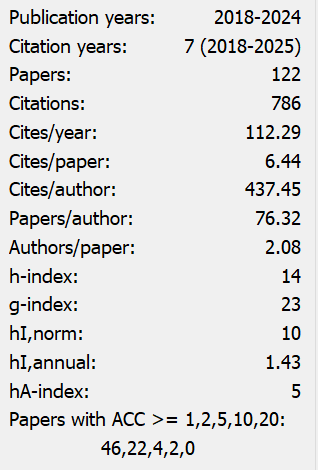Research on the Impact of Data Elements on the Modernization Level of Industrial Chains
Abstract
Based on panel data from 30 Chinese provinces between 2010 and 2021, this study empirically examines the impact of data factor allocation levels on industrial chain modernization and its underlying mechanisms from multiple perspectives. The results demonstrate that data factor allocation significantly improves the level of industrial chain modernization. This conclusion remains robust after addressing endogeneity concerns. Further research reveals that data elements promote industrial chain modernization by alleviating labor factor misallocation. Regional heterogeneity analysis indicates that data factors exhibit substantial effects in eastern China, while their influence remains underdeveloped in central and western regions. Finally, relevant policy recommendations are proposed to optimize these mechanisms.
References
Huang, Y., Gong, S., Zou, C., & others. (2022). Digital economy, factor allocation efficiency, and urban-rural integration. China Population, Resources and Environment, 32(10), 77–87.
Li, C., Li, D., & Zhou, C. (2020). The mechanism of digital economy driving the transformation and upgrading of manufacturing: An analysis from the perspective of the industrial chain. Business Research, (02), 73–82.
Li, X., & Wang, Y. (2020). A study on the data value chain and value creation mechanism. Economic Horizons, (11), 54–62+2.
Li, Z., & Wang, J. (2021). Digital economic development, data element allocation, and manufacturing productivity improvement. Economist, (10), 41–50.
Lian, Y., Chao, X., & Yuan, R. (2024). A study on the impact of the digital economy on industrial modernization. Contemporary Economic Science, 1–15. [Online; retrieved 2024-05-13]
Trabucchi, D., Buganza, T., Fantoni, G., & Lichtenthaler, U. (2022). The platforms' DNA: Drivers of value creation in digital two-sided platforms. Technology Analysis & Strategic Management, 34(8), 891–904. https://doi.org/10.1080/09537325.2021.1932797
Wang, X., & Bai, J. (2021). Factor mobility, resource misallocation, and total factor productivity. Exploration of Economic Issues, (10), 50–61.
Wu, X., & Ren, B. (2022). Pathways and policy adjustments for the restructuring of factor resource allocation mechanisms under the digital economy. Economic System Reform, (02), 5–10.
Yuan, C., Xiao, T., & Geng, C. (2021). Digital transformation and corporate division of labor: Specialization or vertical integration. China Industrial Economics, (09), 137–155.
Zhang, H., Zhang, Y., & Han, A. H. (2022). A study on the measurement of industrial chain modernization in China. Statistical Research, 39(11), 3–18.
Zhao, B. (2021). The impact of the digital economy on regional innovation performance and its spatial spillover effects. Science and Technology Progress and Policies, 38(14), 37–44.
Zhao, T., Zhang, Z., & Liang, S. (2020). Digital economy, entrepreneurial activity, and high-quality development: Empirical evidence from Chinese cities. Management World, 36(10), 65–76.
Zhu, H. (2024). Current status and countermeasures for the development of data trading platforms from the perspective of data element circulation. China Circulation Economy, 38(02), 24–33.

This work is licensed under a Creative Commons Attribution 4.0 International License.
Copyright for this article is retained by the author(s), with first publication rights granted to the journal.
This is an open-access article distributed under the terms and conditions of the Creative Commons Attribution license (http://creativecommons.org/licenses/by/4.0/).


























